below - cartes de visite by John Burton & Sons of Leicester, Nottingham, Burton on Trent and Melton Mowbray. John Burton was the father of the New Zealand photographers Alfred Henry Burton and Walter John Burton.
Dunedin, New Zealand
from 2 December 1867 to 25 November 1876
Alfred Henry Burton and Walter John Burton
from 25 November 1876 to 1881
Alfred Henry Burton
from 1881 to 1890
Alfred Henry Burton and Thomas Mintaro Bailey Muir
from 1890 to July 1898
Alfred Henry Burton
July 1898
purchased by Thomas Mintaro Bailey Muir and George Moodie
Otago Daily Times, Issue 1851, 5 December 1867, Page 3
above: portraits by Burton Bros. Dunedin
Photography on Wheels. — We learn from a Dunedin contemporary that a travelling photographic buggy has just been built by Messrs. J. Robin & Co, to the order of the firm of Messrs Burton Brothers, photographic artists, one of whom is about to start on a photographic tour through the interior. It is, we think, quite original in design, and therefore worthy of notice. It is after the style of a double-seated buggy, with a photographic dark room added behind tho seat. The room is high enough to stand upright in, when used for photographic purposes, and the roof is so contrived as to be lowered when travelling. In this dark room are to be found admirably arranged, everything required by a photographic operator — baths, sink, tank, an ample store of chemicals and plates, cameras and other requisites of the art. The wood is all hickory, and the workmanship is of the best. It is very light, and withal remarkably strong.
Wellington Independent, Volume XXIV, Issue 2907, 26 October 1869, Page 2
We have seen some photographic views taken by Mr A. Burton, of the firm of Burton Bros., during his recent tour up country. The views, which are nine in number, represent scenes on the road between Dunedin and Mount Ida, commencing at Waikouaiti. They are exceedingly well executed, the leading features of the country being clearly defined. Those representing portions of the Horse Ranges are especially worthy of notice in this respect, and the views are, generally, quite worthy of the established reputation of this firm.
Otago Daily Times, Issue 2429, 18 November 1869, Page 2
Messrs Burton Bros, have just issued a set of photographs of the prize takers in the recent interprovincial rifle matches. They consist of six pictures, four of which are groups, and two single portraits. The groups are as follow:—
1. Treseder, Dunedin; Goldie, Port Chalmers; Buchanan, West Taieri.
2. Wilson, Dunedin; Hazard, Auckland; Cameron, Canterbury.
3. Boardman, Auckland; Liddell, Wanganui; Wearing, Kaiapoi.
4. Renouf, Napier; Small, Thames; Paton, Christchurch; Batham, Wellington.
The two single ones are a full length portrait of Colonel Harington, and a three-quarter one of Lieutenant Goldie, the winner of the prize belt.
The pictures are of carte de visit size, and are done in Messrs Bros' best style. They form an interesting souvenir of the recent well contested matches, and will, doubtless, command a ready sale amongst those who took an interest in the proceedings.
Otago Daily Times, Issue 2574, 7 May 1870, Page 2
In our issue of Monday there appeared a description of the manner by which a front page of the London Times was photographed on paper about an inch and a half in length by an inch in width, for transmission from Bordeaux by carrier pigeon to Paris. A solitary copy of so unusual a kind of "photo." was on exhibition yesterday in the window of Messrs Burton Bros., and with the description appended to it, was a special object of attention to passers by. A number of copies, we were informed, would be received to-day.
Otago Daily Times, Issue 2876, 26 April 1871, Page 2
We have received from Messrs Burton Bros., Princes street, some photographs recently taken by them of the Right Rev. Dr Moran. Roman Catholic Bishop of Dunedin. They are of two sizes — cabinet and carte-de-visite — and are admirably executed. There is a clearness and sharpness of definition in them not often found in photographs, and the expression is easy and natural. Altogether, they possess more than average merit as likenesses, while as works of art they are also deserving of high praise.
We have received from Messrs Burton Bros., Princes street, some photographs recently taken by them of the Right Rev. Dr Moran. Roman Catholic Bishop of Dunedin. They are of two sizes — cabinet and carte-de-visite — and are admirably executed. There is a clearness and sharpness of definition in them not often found in photographs, and the expression is easy and natural. Altogether, they possess more than average merit as likenesses, while as works of art they are also deserving of high praise.
Otago Witness, Issue 1023, 8 July 1871, Page 14


We lately noticed a series of photographs of H.M.S. Dido, taken by Messrs Burton Bros. Since then the same firm have taken two photographs of the Dido while in the Graving Dock, the one showing her bow and the other her stern. The photographs exhibit the same skill and finish as the previous ones, and they serve to show in a striking manner the capabilities of our dock for the accommodation of large vessels. No better means of attaining this object could be devised than is afforded by these photographs, copies of which should be sent to those places in seaport towns in Britain and elsewhere, where seafaring men most do congregate.


We lately noticed a series of photographs of H.M.S. Dido, taken by Messrs Burton Bros. Since then the same firm have taken two photographs of the Dido while in the Graving Dock, the one showing her bow and the other her stern. The photographs exhibit the same skill and finish as the previous ones, and they serve to show in a striking manner the capabilities of our dock for the accommodation of large vessels. No better means of attaining this object could be devised than is afforded by these photographs, copies of which should be sent to those places in seaport towns in Britain and elsewhere, where seafaring men most do congregate.
Otago Daily Times, Issue 3410, 10 January 1873, Page 2
We have received from Messrs Burton Bros., Princes street, four finely-executed photographs of the interior of the new First Church. They represent - the half of the church from the centre to the pulpit end; the opposite half of the church; the pulpit; and the capital of one of the pillars near the pulpit. In the two last especially, the beautiful carving of Mr Godfrey is exceedingly well brought out, the plumage of the dove bearing an olive-branch which supports the desk on which the minister's Bible will be placed, and the delicate foliage and tendrils of the capital of the pillar, being shown with the greatest distinctness. Judging from these photographs, the First Church, when finished, will be something to be proud of. These photographs ought to be circulated both in Britain and the neighbouring Colonies, as showing what Dunedin can do, alike in the sculptor's and the photographer's art.
We have received from Messrs Burton Bros., Princes street, four finely-executed photographs of the interior of the new First Church. They represent - the half of the church from the centre to the pulpit end; the opposite half of the church; the pulpit; and the capital of one of the pillars near the pulpit. In the two last especially, the beautiful carving of Mr Godfrey is exceedingly well brought out, the plumage of the dove bearing an olive-branch which supports the desk on which the minister's Bible will be placed, and the delicate foliage and tendrils of the capital of the pillar, being shown with the greatest distinctness. Judging from these photographs, the First Church, when finished, will be something to be proud of. These photographs ought to be circulated both in Britain and the neighbouring Colonies, as showing what Dunedin can do, alike in the sculptor's and the photographer's art.
Otago Daily Times, Issue 3629, 22 September 1873, Page 2
...THE CITY COUNCIL'S GIFT consisted of an album containing photographic views of Otago scenery. The album is of quarto size, handsomely bound in morocco and gold; the first leaf bearing the following inscription, which has been beautifully illuminated by Mr Weston: — "Presented to Captain Jacquemart by the Mayor and Councillors of the City of Dunedin, 13th January, 1874."The next page contains the portraits of the Mayor and City Councillors and the Town Clerk. The album is filled with 80 views, very well executed by Messrs Burton Bros., of Dunedin. The album contains views of the city, and of some of the beautiful scenery in the neighbourhood of the Waterworks Reservoir; also the Maori Kaik, Port Chalmers, and Her Majesty's ship Dido at the Port and in the Graving Dock. There are also views of the most striking features of the agricultural and goldfields districts of the Province...
...THE CITY COUNCIL'S GIFT consisted of an album containing photographic views of Otago scenery. The album is of quarto size, handsomely bound in morocco and gold; the first leaf bearing the following inscription, which has been beautifully illuminated by Mr Weston: — "Presented to Captain Jacquemart by the Mayor and Councillors of the City of Dunedin, 13th January, 1874."The next page contains the portraits of the Mayor and City Councillors and the Town Clerk. The album is filled with 80 views, very well executed by Messrs Burton Bros., of Dunedin. The album contains views of the city, and of some of the beautiful scenery in the neighbourhood of the Waterworks Reservoir; also the Maori Kaik, Port Chalmers, and Her Majesty's ship Dido at the Port and in the Graving Dock. There are also views of the most striking features of the agricultural and goldfields districts of the Province...
Otago Daily Times, Issue 3725, 14 January 1874, Page 2
DUNEDIN AND ITS CELEBRITIES THROUGH THE CAMERA.
by CONSTABLE X.
DUNEDIN AND ITS CELEBRITIES THROUGH THE CAMERA.
by CONSTABLE X.
Messrs. Burton Bros. recently climbed up to the top of the spire of the First Church, and succeeded in taking some excellent views of this city in panorama form. It has just occurred to me that Messrs. Burton Bros, could make a very good thing out of this kind of business were they to take a panoramic view daily at, say, two in the morning, and have it ready to lay before Mr. Bathgate when he takes his seat on the Bench at half-past ten. We should then be able to do without Inspector Mallard (more power to him). No swearing in would be required; all that would be necessary would be the panorama; and then, when the defendant denied the charge — as he very naturally would do — the beak, with a fine American twang undefiled by Scotch, would exclaim — "Forty shillings; apparatus k'ent lie."
Now, Burton, this is really a good idea, and you should endeavour to carry the same out. I will now briefly refer to the panorama, and, dividing it into ten sections, "we come first," as the showman says, "to cage No. 1." The first edifice we notice is the Public Buildings with the entrance to the R. M. Court in bold relief. In it sits one of the best of judges, a man whose character stands unimpeached, and who is assisted by the very best and most civil of clerks. The Judge can, in the words of Milton, exclaim —
High on a throne of royal state,
Which far excelled the wealth of Ormus and of Ind, Bathgate exalted sat
To that proud eminence raised
"By himself."
To the right of this building we have another prominent, but useless structure — a sort of cross between a University, a Supreme Court, and Telegraph Office and Town Hall. Above it towers a clock which must have been going when this photograph was taken, for it registers 11.30 — the exact time, Mr. Burton tells me, when the view was taken. To the left of the picture is the Daily Times and Witness Co.'s Office — a fine building, and, at one time, the castle and stronghold of the celebrated "Master Humphrey," but which now,, in the event of his return, would be his dungeon. Who can look on this building without thinking of the mighty influence the sight of its broad street has had on the destinies of the colony! what collective wisdom there is in that vast pile of bricks and mortar, even from the printer's devil to the engineer's assistant ! how the pendulum of politics has been swayed to and fro by the mighty influence of its leading columns ! how Vogel has wreathed under its cutting irony, and laughed with scorn at its mocking sympathy ! how H. S. Fish has fumed at its satirical remarks, has winced at its severe admonitions, and then eventually stopped his paper and withdrawn his advertisement! All these cannot be told in the present article, so we must pass on to Guthrie and Larnach's large establishment seen in the back-ground. In this firm the name of Larnach is a household and commercial word in Dunedin. Few men have held the confidence of the public so steadfastly as Mr. Larnach. Ever willing to advance the interests of the city and its inhabitants his name is to be seen either on the list of directors or else heading a contribution with his benevolence for some deserving object — a man with few enemies and many warm and true friends.
We now come to cage No. 2, and here we have prominently before us, in two places, Messrs. Sargood's establishment in the foremost. We recognise what was once a house of prayer, but now a house of soles and heels— a den of leather. It was once the place for everlasting souls, but now I am afraid they want toeing and heeling yearly. Behind this is a back view of two banks, each containing a sweating-room, the abomination of over-drawn customers. Above this is a nearly completed building, to be used as a restaurant by Messrs. Watson, and one of the best investments in a city where men of business dine at the fashionable hour. A side view is obtained of the City Council Chamber, and that view is quite sufficient; for, to coin a word, it is one of the most mosolleumish-looking (mausoleumish-looking) buildings I ever saw; but this does not for one moment affect the gentlemen who sit in it. From the Mayor down to Mr. Grant, better city representatives could not be found. We have the Mayor obliging, nous verrons. Burtons have very judiciously placed the view of the church on the back of the cover, as it would be monstrous to send home a panorama of the city and leave the finest building out of it. In conclusion, I would earnestly suggest to the Provincial Government that the best Immigration Agent they can send home is one hundred dozen copies of Burtons' Panorama of Dunedin.
Otago Witness, Issue 1203, 19 December 1874, Page 11Now, Burton, this is really a good idea, and you should endeavour to carry the same out. I will now briefly refer to the panorama, and, dividing it into ten sections, "we come first," as the showman says, "to cage No. 1." The first edifice we notice is the Public Buildings with the entrance to the R. M. Court in bold relief. In it sits one of the best of judges, a man whose character stands unimpeached, and who is assisted by the very best and most civil of clerks. The Judge can, in the words of Milton, exclaim —
High on a throne of royal state,
Which far excelled the wealth of Ormus and of Ind, Bathgate exalted sat
To that proud eminence raised
"By himself."
To the right of this building we have another prominent, but useless structure — a sort of cross between a University, a Supreme Court, and Telegraph Office and Town Hall. Above it towers a clock which must have been going when this photograph was taken, for it registers 11.30 — the exact time, Mr. Burton tells me, when the view was taken. To the left of the picture is the Daily Times and Witness Co.'s Office — a fine building, and, at one time, the castle and stronghold of the celebrated "Master Humphrey," but which now,, in the event of his return, would be his dungeon. Who can look on this building without thinking of the mighty influence the sight of its broad street has had on the destinies of the colony! what collective wisdom there is in that vast pile of bricks and mortar, even from the printer's devil to the engineer's assistant ! how the pendulum of politics has been swayed to and fro by the mighty influence of its leading columns ! how Vogel has wreathed under its cutting irony, and laughed with scorn at its mocking sympathy ! how H. S. Fish has fumed at its satirical remarks, has winced at its severe admonitions, and then eventually stopped his paper and withdrawn his advertisement! All these cannot be told in the present article, so we must pass on to Guthrie and Larnach's large establishment seen in the back-ground. In this firm the name of Larnach is a household and commercial word in Dunedin. Few men have held the confidence of the public so steadfastly as Mr. Larnach. Ever willing to advance the interests of the city and its inhabitants his name is to be seen either on the list of directors or else heading a contribution with his benevolence for some deserving object — a man with few enemies and many warm and true friends.
We now come to cage No. 2, and here we have prominently before us, in two places, Messrs. Sargood's establishment in the foremost. We recognise what was once a house of prayer, but now a house of soles and heels— a den of leather. It was once the place for everlasting souls, but now I am afraid they want toeing and heeling yearly. Behind this is a back view of two banks, each containing a sweating-room, the abomination of over-drawn customers. Above this is a nearly completed building, to be used as a restaurant by Messrs. Watson, and one of the best investments in a city where men of business dine at the fashionable hour. A side view is obtained of the City Council Chamber, and that view is quite sufficient; for, to coin a word, it is one of the most mosolleumish-looking (mausoleumish-looking) buildings I ever saw; but this does not for one moment affect the gentlemen who sit in it. From the Mayor down to Mr. Grant, better city representatives could not be found. We have the Mayor obliging, nous verrons. Burtons have very judiciously placed the view of the church on the back of the cover, as it would be monstrous to send home a panorama of the city and leave the finest building out of it. In conclusion, I would earnestly suggest to the Provincial Government that the best Immigration Agent they can send home is one hundred dozen copies of Burtons' Panorama of Dunedin.
Messrs Burton Bros., whose name has been for nearly 20 years so closely associated with the photographing of New Zealand scenery, have felt for some time that there was a weak place in their immense series of views — that their illustrations of Mount Cook and the wonders of the adjacent region generally were unequal to the rest and were unworthy of their subject. They therefore determined to amend this and to take steps for the production of such a series of alpine photographs as had never been seen in the colony, Accordingly they despatched their representative, Mr Geo. Moodie, to the Hermitage, instructing him to “make a record.” With his equipment—three cameras, a battery of eight lenses of various foci, and every appliance for the production of all sizes of negatives, from the stereograph up to the picture 18 inches by 14 — Mr Moodie declared himself fully content, and so, at the end of February last, he started with a light heart for a two months’ sojourn among the glaciers of Mount Cook. From his rough notes courteously shown to us by Messrs Burton Bros., we make the following excerpts :—
March 7: Spent this morning in prospecting for views on the spur, several hundred feet above our camp, which is known as Green’s fifth camp; and then after lunch climbed a second time and secured the glorious view up the Tasman I had spotted in the forenoon. On the next evening, after a most satisfactory day’s work, set to and arranged our swags for camping on the morrow at the very foot of De la Bêche, eight miles farther up the glacier, and only four from the very top. Accordingly, on March 9, we — Adamson, Graham, and myself — started for De la Bêche with as much as we could carry, leaving at 10.30 and arriving at 4 pm., Graham immediately returning for another load. Our now camp is just a rock which has fallen upon two others. Under this we slept, having only one blanket, but bringing into use the changing tent and focussing velvet. The views on the way up were truly glorious. The first of note is the Ball Glacier and Pass (over which we are going to try to get with small camera), with Mounts Mabel and Rosa on the left, and Mount Cook towering on the right. Next, a magnificent unnamed glacier coming from slopes of Aorangi. Then stands up boldly the Eastern Buttress, hiding Aorangi’s highest peak from the valley below. Next comes perhaps the grandest view of all — the wondrous Hochstetter Icefall, with Mount Tasman’s unclimbable-looking peaks in the background. In due order follows Freshfield Glacier. Between these two last is the point the Rev. Mr Green took in his notable ascent of Mount Cook. Then comes an enormous icefield, 6000ft, from the shoulders of Hardinger and Haast, the Kauffman — named after the famous Swiss guide — the Forrest Ross, and many other glaciers still unnamed.
March 10.— Morning broke dull, so left camera and went exploring across glacier to Malte Brun range, when we had rather a nasty experience, as before we could recross the glacier a fog set in completely round us, and made it look like a night in the ice for us, as we had not brought the compass; but by Adamson’s skilful guidance we reached camp safely, though soaked to the skin, as the fog had turned to thick rain. We were roped together all the way across, Adamson having to do some step-cutting in the steep faces of ice. Though it was but little after noon, as we had no dry clothes we just turned in, and remained until 8 next morning. The night was bitterly cold — snowing — thermometer 28deg, and no firewood! We have to make our tea over a kerosene lamp. Seeing no prospect of the weather improving we returned to the Hermitage — 22 miles...
Mounts Green and Elie de Beaumont
photo by Burton Bros.
Otago Witness, Issue 2130, 20 December 1894, Page 20
photo by Burton Bros.
Otago Witness, Issue 2130, 20 December 1894, Page 20
March 18.— Have just returned to Hermitage after a second and most successful trip up the Tasman Glacier. I have now secured two glorious panoramas — the one of all the great peaks from the Malte Brun range, and the other of that range from a height of 6000ft on De la Bêche. These two series are in strong contrast, for while that from Malte Brun shows a series of mighty snowy peaks, the other one is of huge steep rock faces, upon which no snow could lie. . . . . Having finished the Tasman, I am now about to tackle the Hooker and the Mueller.
The Hermitage
Otago Witness, Issue 2130, 20 December 1894, Page 18
Otago Witness, Issue 2130, 20 December 1894, Page 18
March 31.— A beautiful day. Started early from the camp we had formed three days ago upon the Mueller, as we really did not know where we were going, for the guide had never been past this camp. Our intention was just to go up the ice a little way, get a few views, and return by lunch time, so little did we know what was before us. However, we walked on and on, until we found ourselves on the head ice of the Mueller Glacier. Crevasses were numerous but were filled with snow, thus constituting a danger very difficult to guard against. Graham was leading, with Adamson closely following in his footsteps, when the latter suddenly sank up to us armpits. I received somewhat of a shock, as I was just at his heels. However he got out, and we held a council of war as to whether it were wise to proceed further. We had all ice axes, but had left behind the all-important rope. We agreed to risk it, crevasses or no crevasses, the guide saying, at the same time that it was not fit ground to go on without a rope. We were now just under the saddle, and the guide pointing upwards, said: “Boys, on have got to get up there!” Though we had no food with us — not even the indispensable flask to modify the ice-cold water — we went at it, and after some stiff rock climbing, reached the summit of Barron Saddle, 7654ft. abut 12.30. What a panorama of loveliness met our delighted gaze! Right below us was the great Dobson Valley, with Lake Ohau away at the distant end of it, and, further still, the Benmore Range, in Otago. Turning round to the N.E. a scene of grandeur never to be forgotten was revealed. We stood.
reverse inscriptions
Lady Miller ?
Sir Henry Miller ?
by Burton Bros., Dunedin
[purchased September 2023]
above cdv courtesy of The Laurence Eagle Collection
above cdv courtesy of The Laurence Eagle Collection
[purchased March 2023]
[purchased March 2023]
Hugh Hocking Raddon
born circa 1854 - died 6 September 1891 Christchurch aged 37










































above - Jack Hislop (John Hislop) son of Walter Hislop


above cdv courtesy of The Laurence Eagle Collection
above cdv courtesy of The Laurence Eagle Collection
above cdv courtesy of The Laurence Eagle Collection
above cdv courtesy of The Laurence Eagle Collection
above cdv courtesy of The Laurence Eagle Collection
above cdv courtesy of The Laurence Eagle Collection
above cdv courtesy of The Laurence Eagle Collection
above cdv courtesy of The Laurence Eagle Collection
above cdv courtesy of The Laurence Eagle Collection
[purchased September 2022]
[purchased September 2023]




above - Harry Holms (Henry Holms)


above cdv courtesy of The Laurence Eagle Collection
above cdv courtesy of The Laurence Eagle Collection
above cdv courtesy of The Laurence Eagle Collection
Cabinet Cards
[purchased March 2023]
above cabinet card courtesy of Laurence Eagle
918 - Mongarewa Gorge
by Burton Brothers, Dunedin
949 - Mongarewa Gorge
by Burton Brothers, Dunedin
1385 - Timaru
by Burton Brothers, Dunedin
2359 - Russell Bay of Islands
by Burton Brothers, Dunedin
3027 - Geraldine
by Burton Brothers, Dunedin
by Burton Brothers, Dunedin
by Burton Brothers, Dunedin
by Burton Brothers, Dunedin
Sophia at the Cooking ...
by Burton Brothers, Dunedin
893 - Rotomahana
by Burton Brothers, Dunedin
3849 - Wairoa Hotel
by Burton Brothers, Dunedin
Depicts McRae's Hotel (Rotomahana Hotel) at Te Wairoa, prior to the 1886 Mount Tarawera eruption. There are about twenty people scattered in front of the hotel and on the first floor verandah. Some of them has been identified - the owner, Joseph McRae (man in suit, to right of centre); to the left of him, Aporo Te Wharekaniwha (with beard, tie and braces) and Ngareta.
1309 - Umbrella Buttress - Pink Terrace
by Burton Brothers, Dunedin
1319 - A Geyser - Whatapoko
by Burton Brothers, Dunedin
[purchased March 2023]
by Burton Brothers, Dunedin
946 - Ohinemutu
by Burton Brothers, Dunedin
Trelissick Station, Castle Hill, Canterbury
Burton Bros., Dunedin
The Camera in the Coral Islands






























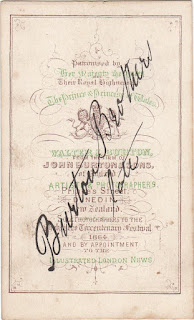















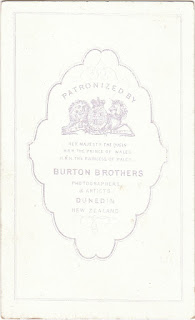






















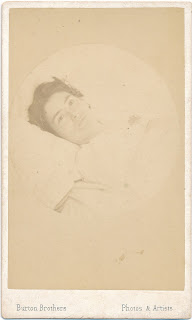














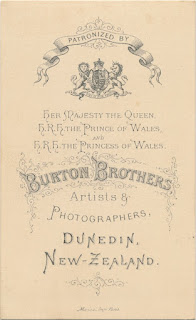






































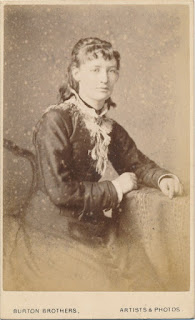



























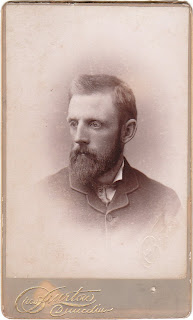

































































































No comments:
Post a Comment